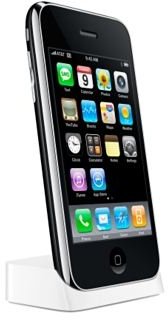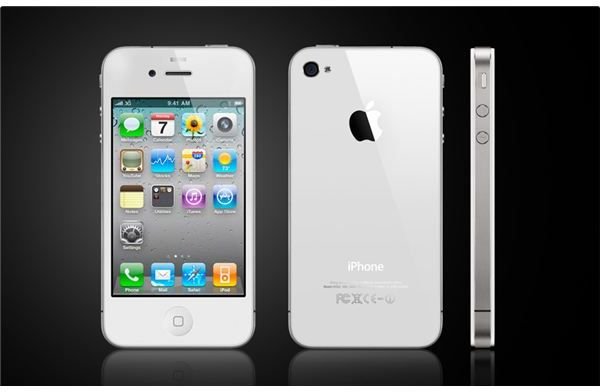iPhone History
History and Development
iPhone’s history began when Steve Jobs instructed Apple Inc’s top engineers to investigate touch screens and create the iPhone. The development of this device started nearly a decade before it came to the markets in 2007. In 1999, Apple acquired the rights to the domain name iphone.org. Several years later the Apple chief announced that they were opting to invest in advanced mobile handsets. Again in an interview in 2002, Steve Jobs mentioned that Apple was working on a smartphone that would kick start the next generation mobile phone market.
After several years of keeping the details of the phone under wraps, Apple announced the launch of the iPhone on June 29, 2007. This new innovation had two hundred patents attached to it. During the press conference, Steve Jobs described the iPhone as ‘revolutionary’ and an ‘innovative design’ .The iPhone stood out from its competitors because of its touch screen, advanced features, and minimal hardware.
Consumer Response
By the end of 2007, nearly six months after the iPhone went on sale, Apple had sold up to 3 million handsets. At the end of 2007, Apple introduced the iPhone to European countries and to the rest of the world by mid 2008. Due to its worldwide launch, Apple iPhone sales went up to 6 million handsets by mid 2008.These figures made iPhone the fastest selling device of all time. iPhone completely changed Apple’s fortunes and became the company’s most profitable device. iPhone dimensions and features may have changed over the last few years but it remains as popular as ever.
iPhone
The iPhone was initially released with two models: an 8 GB model and a 4 GB model. The most distinctive feature of this device was its multi touch screen. Notable features of this phone are:
- Date of release: 29th June, 2007.
- Storage: 4 BG model, 8 GB model and 16 GB model was added later on.
- Operating System: iOS 1.0.
- Key Features: Touch screen, Cellular Internet, Wi-Fi access and 2 mega pixel camera.
- Battery Life: 8 hours talk time, 6 hours internet browsing, and 24 hours audio.
iPhone 3G

Known for innovations, Apple enhanced the iPhone with a second generation model, the iPhone 3G, which was released a year later in 2008. It was equipped with a fast processor and enhanced functionality. Notable features of this phone are:
- Date of release: 11th July, 2008.
- Storage: 8 GB model and 16 GB model.
- Operating System: iOS 2.0.
- Key Features: 3G cellular support, GPS functionality, and available in black and white colors.
- Battery Life: 10 hours of 2G talk time, 5 hours of 3G talk time, 6 hours internet browsing, and 24 hours audio.
iPhone 3GS

A follow up third generation model of Apple iPhone was launched in 2009 – the iPhone 3GS. It had new features like video recording and voice recording. The notable features of this phone are:
- Date of release: 19th June, 2009.
- Storage: 16 GB model and 32 GB model.
- Operating System: iOS 3.0.
- Key Features: Faster processor, more RAM, voice control and video camera.
- Battery Life: 10 hours of 2G talk time, 5 hours of 3G talk time, 9 hours of internet browsing and 30 hours of audio.
iPhone 4

Another year and another iPhone! Apple recently debuted the iPhone 4 in June this year. This phone is a significant departure from its previous cousins. The iPhone 4 is thinner, longer and coated with aluminosilicate glass covering both the front and the back of the phone. Notable features of this phone are:
- Date of release: 24th June, 2010.
- Storage: 16 GB model and 32 GB model.
- Operating System: iOS 4.0.
- Key Features: Faster processor, slimmer design, high resolution screen, and multi-tasking.
- Battery Life: 14 hours of 2G talk time, 7 hours of 3G talk time, 10 hours of internet browsing and 40 hours of audio.
Criticism
The iPhone has been so well received device by the public because it provides innovative and revolutionary technology. But this doesn’t imply that it’s immune to criticism. It has been openly criticized by consumers and industry professionals for its poor battery life. The JD Power and Associate consumer satisfaction survey gave Apple a low grade on battery life. In response, Apple started replacing the malfunctioning batteries for free. Most recently, consumers have been complaining about the iPhone’s antenna problem. The metal bands surrounding the iPhone 4 also act as antennas for reception. When the user grips the phone towards the bottom, it drops the signal. Steve Jobs has responded to this problem by offering free bumper cases to iPhone 4 users.
Impact of the iPhone
The iPhone is the most innovative phone of all time. It’s a trendsetter. Whenever a new iPhone model hits the market, hundreds of buyers stand outside cellular stores waiting for hours to get their hands on the device. It is a remarkable, all in one technological device geared towards the general public and it is still hugely popular.
